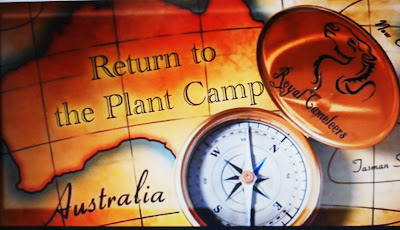Soon to leave Townsville in search of objects buried in 1861 during the tragic south-north crossing of Australia is an expedition in which a former Darwin resident , George Koulakis , founder of an adventurous group of former and serving military personnel known as the Royal Cameleers , has played a large part .
In 2014 , Koulakis, who served with the RAAF in Darwin , produced an eight part documentary retracing the footsteps of the Burke and Wills expedition. In this latest venture , the aim is to search for navigation and scientific equipment buried by the explorers shortly before they died at a place designated return plant camp 32 in western Queensland . This includes a sextant , telescopes , compasses .
On August 20,1860, the Burke and Wills Expedition left Royal Park , Melbourne, to a cheering crowd estimated at 15,000 to cross the continent , a distance of 2000 miles , 3250 kilometres.
The leader, Robert O'Hara Burke , Irish born, a former Austrian army officer and a Queensland police superintendent, had no bush experience ; William John Wills , surveyor and navigator , third in charge , had bushcraft skills . The 19-man party included six Irishmen , five Englishmen , four Afghan camel drivers , three Germans and an American . Their supplies, to last two years , weighed 20 tonnes and even included a table and chairs , flares, a Chinese gong .
There were 23 horses , six wagons and 26 camels . Imported from India , the camels were first kept in stables at parliament house, Melbourne . One of the wagons broke down after a short distance and proved not to be suitable for the trying venture .
Becoming concerned about the slowness of progress and the possibility of John McDouall Stuart making the crossing before his party to collect a 2000 pound South Australian Government reward , Burke broke the party into two groups and left one at a depot on Coopers Creek , while he proceeded north with Wills ; while they did see the northern coast from the Flinders River , the mangrove swamps blocked their way.
Thus began their terrible ordeal back to Coopers Creek, hindered by monsoonal rain . On arrival , exhausted , they discovered the rest of the party had departed only hours before . Both Burke and Wills died an agonising death on June 30, 1861. In all , seven members of the expedition perished and the only one who had actually viewed the northern coast and survived was Irish soldier, John King.
The modern, well planned search party for the Return to the Plant Camp for buried objects from that great Australian tragedy has ground penetrating radar and the latest metal detectors. Above graphic from informative Koulakis video about Burke and Wills and the looming search . Outback rain has delayed departure plans .
Dramatic illustration at head of this post , Burke and Wills at Mount Hopeless, by George Lambert, 1907, Bendigo Art Gallery .
Dramatic illustration at head of this post , Burke and Wills at Mount Hopeless, by George Lambert, 1907, Bendigo Art Gallery .




